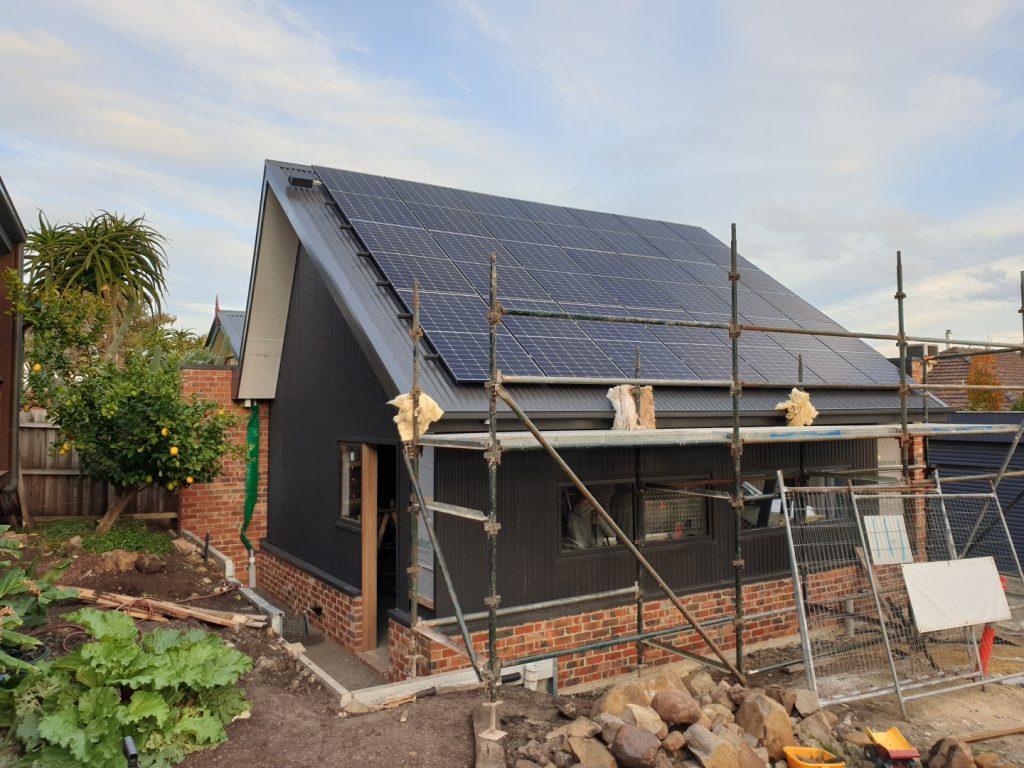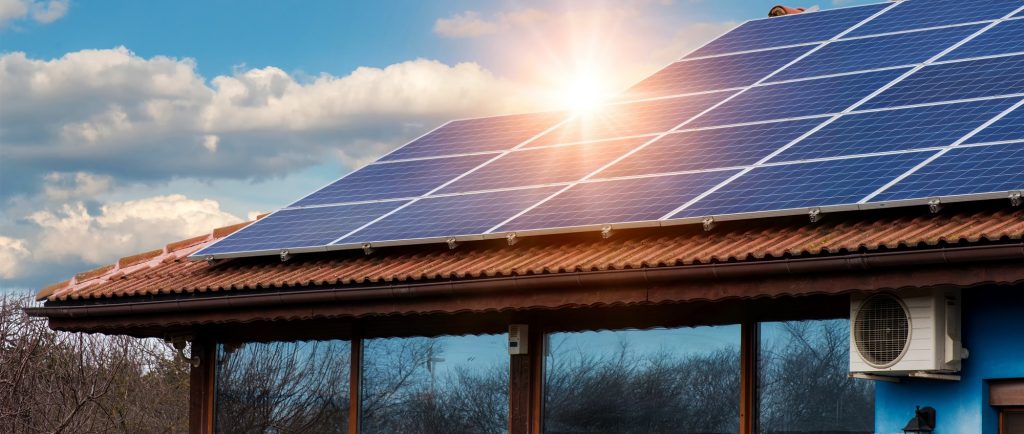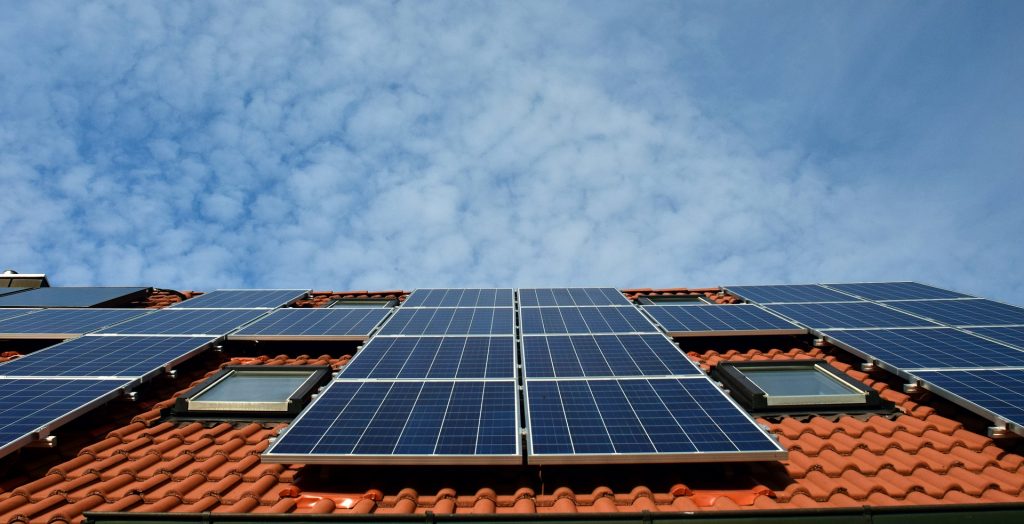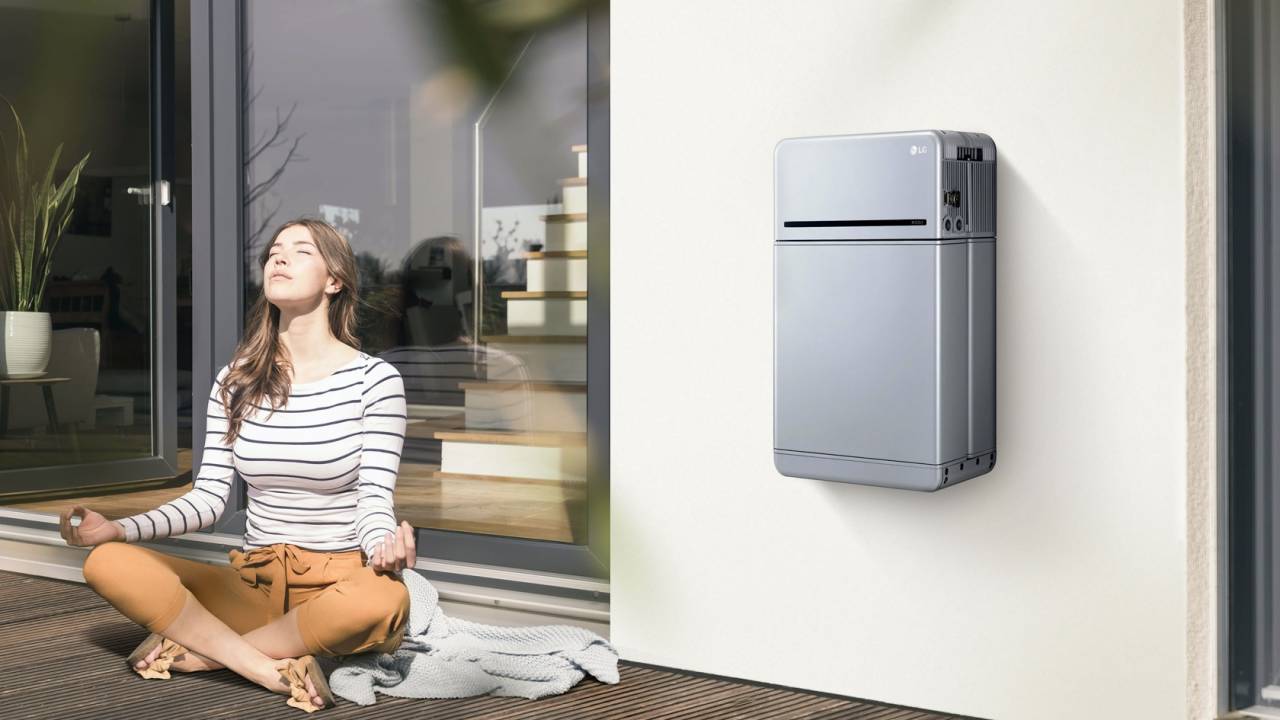
One of the most critical aspects of switching to solar energy is learning about the photovoltaic (PV) system’s battery type.
Solar batteries can be found in a wide variety of sizes, each offering its own set of advantages. As you look around for the finest battery for your solar panels, you can choose from various options, including lithium-ion and gel lead acid batteries.
To help you choose the finest solar battery for your needs, we’ll review the various options currently on the market and examine their benefits and drawbacks in this article.
Systems And Components For Solar Batteries
With the advent of lithium-ion battery chemistry & streamlined, modular storage systems, setting up solar battery systems is far easier.
Chemistry Of Batteries
To get the Solar Battery Refund, homeowners must purchase a battery on the Solar Victoria Certified Products List. Lithium-ion batteries are the only kind currently represented.
Batteries Made Of Lithium-Ion
The falling price of lithium-based battery chemistries throughout recent years has made widespread home battery usage financially feasible.
Compared to their power output, these batteries are incredibly portable and lightweight. They have a long lifespan and may be charged quickly.
Many lithium-ion batteries are not created equal. Currently, available lithium batteries come in two primary types: lithium nickel mn copper oxides (NMC) and lithium phosphoric (LFP or LiFePO4).
However, if depleted too quickly, NMC batteries can overheat despite their high energy density. Despite their slightly bigger size, safer lithium iron phosphate batteries have won widespread acceptance.
Other Chemicals
The ‘flooded’ lead-acid battery was the most prevalent type of household battery chemistry for many years. Still, in recent years, safer sealed lead acid (SLA) batteries have taken their place.
While these batteries can be utilised in grid-connected solar battery systems, they find more common use in off-grid solar installations.
Flow batteries, which store energy in a liquid, are the other major chemical. Its primary benefits are the absence of potential hazards, low maintenance requirements, and lengthy storage times for the charge.
Homeowners may only choose from a small selection of flow battery models.
Other chemical approaches are in various phases of development & commercialisation that may become accessible soon.
Setups For Batteries
These days, solar photovoltaic systems typically link to batteries that are part of preconfigured storage in a box module.
The inverter is integrated into the same package as the battery in these devices. Apart from the solar panels and the inverter, the device is wired into your home’s electrical panel.
Such a setup is convenient for adding batteries to new or preexisting photovoltaic systems. To extend its useful life, the battery might be placed differently than the solar inverter.
In addition to facilitating speedy installation thanks to pre-wired connections between parts, pre-configured systems tend to be tidier because many parts and cables are stored in a single enclosure.
Certain storage devices are constructed so that additional battery modules may be inserted into the case, allowing for the capacity to be increased without replacing the entire unit.
Some battery products don’t include an inverter, but the battery and accessories, including safety switches, cooling devices, and a battery management system (BMS).
Overcharging can be avoided by linking these items to an inverter or charge controller that is compatible with them. As a rule, they are linked to a ‘hybrid’ inverter, which incorporates a charge controller and permits the linking of a DC-coupled battery.
Recognising Inverters
A grid-interactive inverter will be used by the vast majority of currently installed solar PV systems that link to the grid. There is no need for batteries or other energy storage when using solar panels; instead, a grid-interactive inverter transforms the energy from the panels into utility current and feeds it into the home’s electrical wiring.
The inverter now has to deal with a generation source (such as a solar PV system), energy storage (such as batteries), and potentially the grid, adding a layer of complexity to the equation. A hybrid inverter was utilised in this situation.
Many different kinds of inverters can be replaced by hybrid inverters because of the versatility and versatility of their many capabilities.
One possible use for a hybrid inverter is in a basic solar PV system linked to the grid but lacking any storage, to add batteries eventually.
Nevertheless, the solar business is changing rapidly, so it’s possible that you won’t be able to locate a battery that works with your “old” inverter if you wait a few years to make your purchase.
Another option is to start with a cheaper solar inverter and upgrade to a hybrid inverter if you intend to add a battery.
Add-On Batteries And Smart Technology
If your planned system will charge from and interact with the grid, or if it requires any supplementary systems, you should discuss these details with your installer.
Nowadays, batteries aren’t the straightforward tools they used to be.
Using historical data and external factors like wholesale electricity costs and weather forecasts, many storage systems can maximise their energy output by employing sophisticated computer processing power and algorithms.
Since solar energy output is predicted to be low the following day, some systems can recharge their batteries from the grid at night (at reduced prices) using local weather information from online weather sources.
When this information is combined, the battery can make charging and discharging decisions that maximise solar energy usage while minimising grid energy consumption (and export if feed-in tariffs are low).
Energy management systems are a useful add-on for storage systems, even if they already include the necessary components.
Solar Battery Types
The Lithium-ion
These batteries are currently the most popular option for residential use, and their technology is comparable to that seen in smaller devices like smartphones and laptops.
Many variations of lithium-ion chemistry exist. Tesla and LG Chem use lithium nickel-manganese-cobalt (NMC) batteries, a popular variety used in residential applications.

Lithium iron phosphate (LiFePO) is another general chemistry that is considered to be safer than NMC because of a reduced danger of overheating (battery damage & potential fire due to overheating or overcharging), but it has a lower energy density. Home batteries from BYD & Sonnen, among others, feature LFP.
Pros
- Some thousand charge-discharge cycles are possible with them.
- They allow for a heavy discharge (up to 80%-90% of their total capacity).
- They perform admirably in a wide temperature range.
- In typical conditions, their lifespan should exceed ten years.
Cons
- Large lithium batteries may have an issue when they end their useful life.
- Large-scale recycling initiatives are only starting, but they’re crucial for recovering valuable metals and avoiding harmful trash. It is anticipated that recycling methods will advance in tandem with the proliferation of lithium-ion batteries for use in mobile devices, cars, and other consumer goods.
Lead-Acid, Plus Lead-Acid (Lead Carbon)
Large-scale storage systems often use the same tried-and-true lead-acid battery technology to start your car. It’s a tried-and-true battery technology with widespread familiarity.
One manufacturer of high-tech lead-acid batteries is Ecoult.
However, lead acid is unlikely to be competitive with lithium-ion and other technologies in the long run unless there are considerable improvements in performance or price reductions.
Pros
- They can be disposed of and recycled at a low cost and with ease.
Cons
- There’s a lot of extra weight to them.
- High environmental temperatures can reduce its longevity.
- Their charging time is relatively long.
Battery For Flow
This type of battery, which uses pumped electrolytes (such as zinc-bromine or vanadium ions) plus chemical processes to store charge and discharge it again, is among the most promising options for lithium-ion.
The ZCell battery developed by Redflow is the most popular flow battery on the market in Australia.
Pros
- They retain their charge even after being discharged to their full capacity, making them ideal for emergencies.
- In other words, they retain their full potential indefinitely.
- They function properly even when the temperature outside is extremely hot.
- They are simple to reuse after being recycled.
- The expected lifespan is ten years and up.
Cons
- Because of their status as cutting-edge technology, they cost more than lithium-ion batteries.
- As the temperature drops below 15 degrees Celsius, they start to feel sick.
- They have a high maintenance cost and are frequently out of commission.
Other Kinds
The evolution of battery & storage technology is fast. Hybrid ions (salt water) cells, molten salt battery packs, and graphite supercapacitors are other existing technologies. Not one of these is widely used right now, though.
Battery Characteristics
They are the main technical details for a house battery.
The Capacity
Battery capacity is the energy the battery can hold, expressed in kilowatt-hours (kWh). The core network is the maximum amount of energy that can be stored in the battery; the practical capacity is the amount drawn from the battery in practice.
Dimensions Of Discharge (Dod)
The percentage is the maximum allowable energy consumption before rapidly depleting the battery. To prevent malfunction, most battery types require a constant charge.
Discharging a lithium-ion battery to between 80 and 90 percent of its rated capacity is safe. Unlike flow batteries, which can only be discharged to a certain percentage, lead-acid batteries can be discharged down to zero.
Power
What is the battery’s maximum output power is in kilowatts?
The battery’s max power is the highest it can produce at any given time. However, this surge of power can typically only be maintained for brief intervals. It is the quantity of power the battery supplies at all times while it has sufficient charge.
Efficiency
How much energy can be stored and released from the battery for each kWh of input? Although there is always some loss, the efficiency of a lithium battery is typically greater than 90%.
Total Cycles Of Charging And Discharging
You might think of this as the number of times the battery can be charged and discharged before it dies; it is also termed cycle life.
There could be some variation in the rating from maker to manufacturer. Most lithium batteries will last for thousands of charges and discharges.
Longevity (Years Or Cycles)
Depending on the manufacturer, batteries may be measured in cycles (as described above) or years (during the duration of the warranty) (which is generally an estimate based on the expected typical usage of the battery).
Moreover, the projected level of functioning on the deathbed should be included in the lifespan description. In the case of lithium batteries, this is typically between 60% and 80% of full power.
Temperature Range In The Surrounding Environment
Batteries have a narrow temperature window in which they can function properly. They can deteriorate or even shut down under extreme temperatures.
How Long Will A Solar Battery Last?
If used normally and kept out of high temperatures, most types of solar batteries should survive for about ten years. That is, they ought to be able to endure for the duration of the manufacturer’s warranty, typically ten years for most models.
Since recent generations of such batteries have just been out for a few years, there’s not enough market information to prove whether they typically last forever in real-world residential installations.
The results of durability and longevity testing on batteries in laboratories have been disappointing. The results of a current solar battery study in Australia showed a very high failure rate, with almost no batteries in the trial functioning without significant issues.
Most of them either failed and had to be replaced, were defective and couldn’t be replaced, or had operational issues that required intervention from the manufacturer (for example, because the manufacturer was out of business or would no longer support that product).
Yet, based on customer evaluations on some websites, most homes with storage batteries, particularly those using the leading manufacturers, are pleased with their purchase. While there have been isolated reports of poor battery life or unhelpful responses from the manufacturer, on the whole, it appears the batteries are functioning as advertised.
FAQs About Solar Batteries
What are the three types of solar batteries?
The four main types of batteries used in the world of solar power are lead-acid, lithium-ion, nickel-cadmium and flow batteries.
Which type of battery is best for the solar system?
Lithium-ion batteries. Batteries used in home energy storage typically are made with one of three chemical compositions: lead acid, lithium-ion, and saltwater. In most cases, lithium-ion batteries are the best option for a solar panel system, though other battery types can be more affordable.
What are the top 5 solar batteries?
- Best Overall: Tesla Powerwall 2.
- Most Intelligent: Enphase IQ.
- Most Powerful: Generac PWRcell.
- Best Value: LG Chem RESU-10H.
- Most Versatile: BYD Battery-Box Premium HV.
Which solar batteries last the longest?
Three types of batteries are commonly used in solar storage: lead-acid, lithium-ion, and saltwater. Of these three options, lithium-ion batteries will last the longest.
What is the safest solar battery?
The safest one today is lithium iron phosphate battery technology or LFP. These are highly stable and have no chance of overheating. They also run very coolly, so they can be placed inside your home, if desired, and won’t require extra ventilation or cooling.
Conclusion
There is a wide range of solar batteries available, from small lithium-ion cells to large gel lead acid batteries. Homeowners who buy a battery from the Solar Victoria Certified Products List are eligible for a rebate.
Only lithium-ion batteries, which can last a long time and be charged quickly, are currently available.
The other main chemical is the flow battery, which stores energy in a liquid and has the advantages of being safe, needing little maintenance, and having a long charge retention time.
These devices make it easy to incorporate batteries into new or existing photovoltaic systems because the inverter is included in the same package as the battery.
Since many components and cables are contained in a single case, pre-configured systems are typically more orderly. There are battery products that don’t include an inverter but do come with the battery and accessories like safety switches, cooling mechanisms, and a battery management system (BMS).
Connecting them to an inverter or charge controller designed to work with them will prevent them from being overcharged.
The vast majority of currently installed solar PV systems that connect to the grid use a grid-interactive inverter to convert the energy produced by the panels into utility current for use in the home’s electrical wiring.
Solar inverters are less expensive than hybrid inverters, and can be upgraded to the latter if a battery is later added to the system.

There isn’t enough data on the market to say whether or not they have an indefinite lifespan in residential settings.
Recent research into solar batteries in Australia has shown a very high failure rate, with virtually no batteries passing the trial without serious problems. Still, the vast majority of battery-equipped homes report no regrets.
Content Summary
- One of the most critical aspects of switching to solar energy is learning about the photovoltaic (PV) system’s battery type.
- Solar batteries can be found in a wide variety of sizes, each offering its own set of advantages.
- As you look around for the finest battery for your solar system, you can choose from various options, including lithium-ion and gel lead acid batteries.
- To help you choose the finest solar battery for your needs, we’ll review the various options currently on the market and examine their benefits and drawbacks in this article.
- The inverter is integrated into the same package as the battery in these devices.
- Apart from the solar panels and the inverter, the device is wired into your home’s electrical panel.
- Such a setup is convenient for adding batteries to new or preexisting photovoltaic systems.
- To extend its useful life, the battery might be placed differently than the solar inverter.
- Some battery products don’t include an inverter, but the battery and accessories, including safety switches, cooling devices, and a battery management system (BMS).
- Overcharging can be avoided by linking these items to an inverter or charge controller that is compatible with them.
- A grid-interactive inverter will be used by the vast majority of currently installed solar PV systems that link to the grid.
- There is no need for batteries or other energy storage when using solar panels; instead, a grid-interactive inverter transforms the energy from the panels into utility current and feeds it into the home’s electrical wiring.
- The inverter now has to deal with a generation source (such as a solar PV system), energy storage (such as batteries), and potentially the grid, adding a layer of complexity to the equation.
- One possible use for a hybrid inverter is in a basic solar PV system linked to the grid but lacking any storage, to add batteries eventually.
- Nevertheless, the solar business is changing rapidly, so it’s possible that you won’t be able to locate a battery that works with your “old” inverter if you wait a few years to make your purchase.
- If your planned system will charge from and interact with the grid, or if it requires any supplementary systems, you should discuss these details with your installer.
- It is anticipated that recycling methods will advance in tandem with the proliferation of lithium-ion batteries for use in mobile devices, cars, and other consumer goods.
- They can be disposed of and recycled at a low cost and with ease.
- The ZCell battery developed by Redflow is the most popular flow battery on the market in Australia.
- They retain their charge even after being discharged to their full capacity, making them ideal for emergencies.
- Because of their status as cutting-edge technology, they cost more than lithium-ion batteries.
- Discharging a lithium-ion battery to between 80 and 90 percent of its rated capacity is safe.
- Unlike flow batteries, which can only be discharged to a certain percentage, lead-acid batteries can be discharged down to zero.
- Most lithium batteries will last for thousands of charges and discharges.
- Longevity (Years Or Cycles) Depending on the manufacturer, batteries may be measured in cycles (as described above) or years (during the duration of the warranty) (which is generally an estimate based on the expected typical usage of the battery).
- Moreover, the projected level of functioning on the deathbed should be included in the lifespan description.
- If used normally and kept out of high temperatures, most types of solar batteries should survive for about ten years.
- That is, they ought to be able to endure for the duration of the manufacturer’s warranty, typically ten years for most models.
- Since recent generations of such batteries have just been out for a few years, there’s not enough market information to prove whether they typically last forever in real-world residential installations.
- The results of durability and longevity testing on batteries in laboratories have been disappointing.
- The results of a current solar battery study in Australia showed a very high failure rate, with almost no batteries in the trial functioning without significant issues.
- While there have been isolated reports of poor battery life or unhelpful responses from the manufacturer, on the whole, it appears the batteries are functioning as advertised.
